This schematic cut-away view of the components of Jupiter's ring system shows the geometry of the rings in relation to Jupiter and to the small inner satellites, which are the source of the dust which forms the rings.
Click on image for full size
Image courtesy of NASA/JPL.
Galileo Discovers Origin of Jupiter's Rings
News story originally written on September 21, 1998
Scientists discovered how
Jupiter's rings were made. Jupiter's rings are made up of dust and other small particles. This dust and other space junk was thrown off of the
small moons surrounding Jupiter when
these moons were struck by comets or asteroids.
You can look at the picture to the left to see what Jupiter's rings look like. Can you redraw the picture at home?
You might also be interested in:
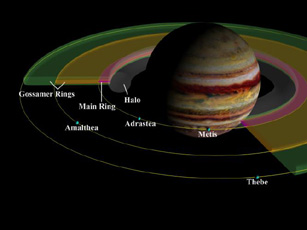
You may think Saturn is the only planet with rings. It is not! Jupiter has rings, too. They aren't as easy to see as Saturn's, but they are there! Saturns rings are made of ice and are very bright. Jupiter's
...more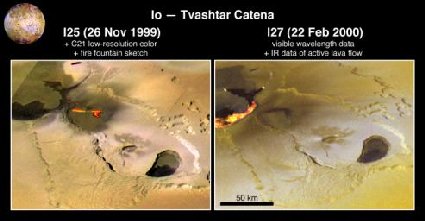
The Galileo spacecraft has been in space more than 10 years! It has been orbiting Jupiter for more than five years. And Galileo is still going strong! The Galileo mission was suppose to end years ago.
...more
Adrastea is a small moon of Jupiter. Of Jupiter's 60 moons, it is the second closest to the planet. Adrastea was discovered by David Jewitt and Ed Danielson of the Voyager team in 1979. Adrastea is tiny
...more
It was another exciting and frustrating year for the space science program. It seemed that every step forward led to one backwards. Either way, NASA led the way to a great century of discovery. Unfortunately,
...more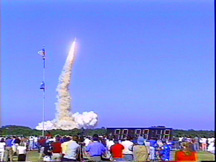
The Space Shuttle Discovery lifted off from Kennedy Space Center on October 29th at 2:19 p.m. EST. The sky was clear and the weather was great. This was the America's 123rd manned space mission. A huge
...more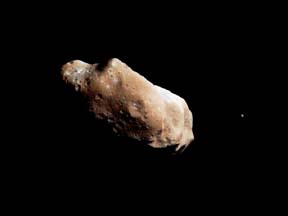
Scientists found a satellite orbiting the asteroid, Eugenia. This is the second one ever! A special telescope allows scientists to look through Earth's atmosphere. The first satellite found was Dactyl.
...more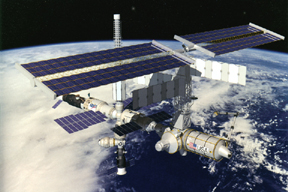
The United States wants Russia to put the service module in orbit! The module is part of the International Space Station. It was supposed to be in space over 2 years ago. Russia just sent supplies to the
...more













